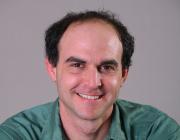Levin N.
Human factors explain the majority of MODIS-derived trends in vegetation cover in Israel: a densely populated country in the eastern Mediterranean. Regional Environmental Change [Internet]. 2016;(4) :1197.
Publisher's VersionAbstractLand cover and land use changes can result from climatic variability and climate changes, as well as from direct and indirect human drivers, such as growth in population and consumption. In this study, we aimed to examine whether major factors driving landscape changes (expressed in vegetation cover) in Israel, a densely populated country in the eastern Mediterranean Basin, are related to physical drivers or to human causes. To this end, we calculated statistical trends in the Normalized Difference Vegetation Index (NDVI–a spectral index representing vegetation cover) from a 14-year MODIS time series, between 2000 and 2014, to identify areas where vegetation cover has either increased or decreased. We chose 125 study areas where statistically significant changes in NDVI were found and used time series of monthly rainfall, Landsat images, Google Earth images and environmental GIS layers to identify the type and cause of landscape changes. The two most common general classes driving la
Levin N, Phinn S.
Illuminating the capabilities of Landsat 8 for mapping night lights. Remote Sensing of Environment [Internet]. 2016 :27.
Publisher's VersionAbstractRemote sensing of night-lights has been enhanced in recent years with the availability of the new VIIRS Day and Night band, the commercial EROS-B satellite and astronaut photographs from the International Space Station. However, dedicated space-borne multispectral sensors offering radiance calibrated night lights imagery are yet to be launched. Here we examined the capabilities of Landsat 8 to acquire night time light images of the Earth. Examining seven night-time Landsat 8 scenes, we found that brightly lit areas in both urban (Berlin, Las Vegas, Nagoya and Tel-Aviv) and gas flares (Basra, Kuwait) areas were detected in all eight bands of Landsat 8. The threshold for detection of lit areas was approximately 0.4W/m.sup.2/[mu]m/sr in bands 1-5 and 8 of Landsat 8. This threshold level was higher than Landsat dark noise levels, and slightly lower than post launch Landsat 8 OLI band dependent noise equivalent radiance difference levels. Drawing on this, we call on the USGS to plan an ann
Levin N.
Erratum to: Human factors explain the majority of MODIS-derived trends in vegetation cover in Israel: a densely populated country in the eastern Mediterranean. Regional Environmental Change [Internet]. 2016;(4) :1213.
Publisher's VersionAbstractTo access, purchase, authenticate, or subscribe to the full-text of this article, please visit this link:
http://dx.doi.org/10.1007/s10113-015-0862-6 Byline: Noam Levin (1) Author Affiliation: (1) Department of Geography, Hebrew University of Jerusalem, Mt Scopus, 91905, Jerusalem, Israel Article History: Registration Date: 11/08/2015 Online Date: 05/09/2015 Article note: The online version of the original article can be found under doi: 10.1007/s10113-015-0848-4. The online version of the original article can be found at
http://dx.doi.org/10.1007/s10113-015-0848-4.
Levin N, Tessler N, Smith A, McAlpine C.
Erratum to: The Human and Physical Determinants of Wildfires and Burnt Areas in Israel. Environmental Management [Internet]. 2016;(3) :563.
Publisher's VersionAbstractTo access, purchase, authenticate, or subscribe to the full-text of this article, please visit this link:
http://dx.doi.org/10.1007/s00267-016-0725-z Byline: Noam Levin (1,2), Naama Tessler (3), Andrew Smith (2), Clive McAlpine (2) Author Affiliation: (1) Department of Geography, Hebrew University of Jerusalem, Mt Scopus, Jerusalem, Israel (2) School of Geography, Planning and Environmental Management, The University of Queensland, St Lucia, Brisbane, QLD, Australia (3) Department of Biology and Environment, Faculty of Natural Sciences, University of Haifa-Oranim, Tivon, Israel Article History: Registration Date: 10/06/2016 Online Date: 22/06/2016 Article note: The online version of the original article can be found under doi: 10.1007/s00267-016-0715-1. The online version of the original article can be found at
http://dx.doi.org/10.1007/s00267-016-0715-1.

